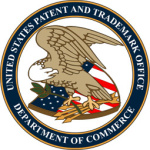- Industri: Legal services
- Number of terms: 3815
- Number of blossaries: 0
- Company Profile:
statutory basis (Trademark Act Section 2(e)(1), 15 U.S.C. Section 1052(e)(1), TMEP 1209 et seq) for refusing registration of trademarks and service marks because the proposed mark merely describes an ingredient, quality, characteristic, function, feature, purpose or use of the specified goods or services. With regard to trademark significance, matter may be categorized along a continuum, ranging from marks that are highly distinctive to matter that is a generic name for the goods or services.
The degree of descriptiveness can be determined only by considering it in relation to the specific goods or services. At one extreme are marks that are completely arbitrary or fanciful. Next on the continuum are suggestive marks, followed by merely descriptive matter. Finally, generic terms for the goods or services are at the opposite end of the continuum from arbitrary or fanciful marks.
The major reasons for not protecting descriptive marks are: (1) to prevent the owner of a mark from inhibiting competition in the sale of particular goods or services; and (2) to maintain freedom of the public to use the language involved, thus avoiding the possibility of harassing infringement suits by the registrant against others who use the mark when advertising or describing their own products. (See also Descriptive Mark)
Industry:Legal services
the "flow of work"
Workflow diagrams are a formal way to identify procedural steps and the logic employed in a process used to complete a task or job. Workflow diagrams include each interim step and product(s); the direction of movement through the process (indicated by arrows); decision points, alternative processes and repeated steps, and dependencies (steps or processes that must be completed before, during or after completion of a particular step); and can include the estimated time required for each step, who performs or reviews each step, and resource requirements. Depending on the type of workflow diagramming method used, the start and end points of each interim step may be listed separately or the entire process step can be indicated by a single notation.
Industry:Legal services
The "Protocol Relating to the Madrid Agreement Concerning the International Registration of Marks" (Madrid Protocol) is an international treaty that allows a trademark owner to seek registration in any of the countries that have joined the Madrid Protocol by filing a single application, called an “international application.”
Industry:Legal services
Trademark Act of 1946, as Amended (PUBLIC LAW 79-489, CHAPTER 540, APPROVED JULY 5, 1946; 60 STAT. 427)- currently contained in Chapter 22 of Title 15 of the United States Code (USC); the major body of U.S. law that governs federal registration of trademarks
Industry:Legal services
Under 35 USC § 253 (paragraph 1) and 37 CFR 1.321(a), the owner (in part or in entirety) of a patent may relinquish all rights to a complete claim or claims of the owner's patent.
Industry:Legal services
used to designate an independent inventor who has elected to file an application by themselves without the services of a licensed representative.
Industry:Legal services
USPTO form that trademark owners use to record trademark assignments (changes in ownership of marks for applications and registrations) and a trademark owner’s change of entity name. The form is PTO-TM-1594. It may be submitted in hard copy to the following address:
Industry:Legal services
USPTO’s online database for monitoring federal trademark applications and registrations. Using TARR, applicants, trademark owners and the public may check the status of pending trademark applications and registrations. To access information about a specific mark, users must provide the associated serial number or registration number of the record they seek.
Industry:Legal services
weekly publication of the USPTO that permits you to browse issued patents and view important notices
Industry:Legal services
57 statutory OIGs were created by an act of Congress in 1978 to independently detect fraud or instances of waste, abuse or misuse of federal funds and identify operational deficiencies within each of the Departments.
Industry:Legal services
